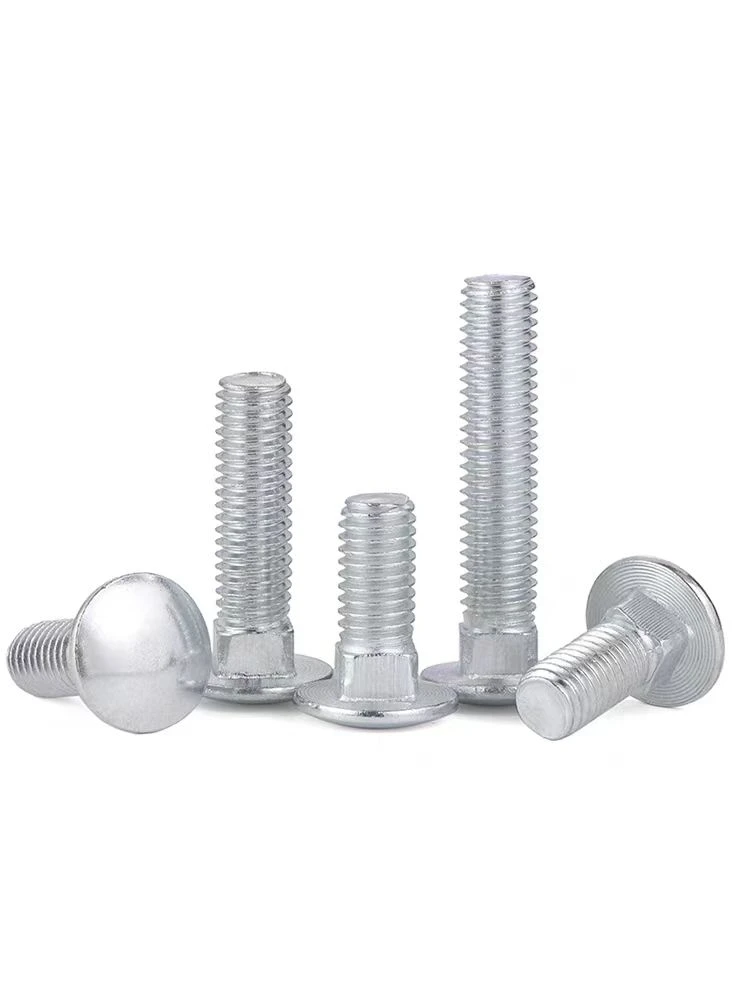

stud bolt fully threaded
Dec . 30, 2024 01:21 Back to list
stud bolt fully threaded
Understanding Stud Bolts The Fully Threaded Solution
Stud bolts are essential components in various engineering applications, particularly in the fields of mechanical engineering, construction, and manufacturing. These fasteners play a crucial role in connecting two or more parts together and ensuring the structural integrity of assemblies. In this article, we will focus on fully threaded stud bolts, exploring their design, applications, benefits, and key considerations.
What are Stud Bolts?
Stud bolts are long, cylindrical rods that feature a threaded portion along their entire length. Unlike conventional bolts, which have a distinct head at one end, stud bolts typically have threads on both ends, allowing them to be inserted into nuts or tapped holes from either side. This design enables the creation of robust fastening systems capable of withstanding significant loads and forces.
Types of Stud Bolts
There are different types of stud bolts available in the market, categorized based on various parameters, including thread profile, material, and mechanical properties. The three most common types are
1. Fully Threaded Stud Bolts As the name suggests, these bolts are threaded entirely along their length. They are used in applications where both ends must connect to a threaded component or a nut. Fully threaded stud bolts provide uniform clamping force and are suitable for critical applications like flanged connections in piping systems.
2. Partially Threaded Stud Bolts These bolts have threads only on a portion of their length, usually on one end. The unthreaded portion is designed to provide a bearing surface, which can be beneficial in specific applications where axial load requirements dictate this design.
3. Double End Studs These are stud bolts that feature threads on both ends but may have an unthreaded portion in the center. This configuration allows for more flexibility in assembly, enabling connection to two parts and providing a solid anchor.
Applications of Fully Threaded Stud Bolts
Fully threaded stud bolts find their applications in diverse fields
- Construction In construction, they are widely used in structural steel connections, particularly in beam-to-column and column-to-foundation connections. Their ability to distribute stress uniformly enhances the stability and strength of structures.
- Oil and Gas Industry Stud bolts are prevalent in the oil and gas sector for flanged joints in piping systems. They are instrumental in maintaining sealing under high-pressure conditions, where leakage prevention is critical.
- Automotive Industry In automotive engineering, fully threaded stud bolts are used to secure components such as engine assemblies, suspension systems, and chassis. Their high tensile strength is essential for withstanding vibrations and dynamic loads.
stud bolt fully threaded

- Manufacturing Various manufacturing processes utilize fully threaded stud bolts for the assembly of machinery and equipment. They provide reliable fastening solutions that can be easily adjusted or disassembled when required.
Benefits of Fully Threaded Stud Bolts
1. Enhanced Load Distribution Fully threaded stud bolts provide a uniform clamp load across the entire connection, reducing the risk of localized stress concentrations that can lead to failure.
2. Versatility They can be used in various applications, making them a versatile choice for engineers and designers. Their adaptability makes them suitable for both permanent and temporary fastening needs.
3. Ease of Installation Their design facilitates quick and straightforward installation. With threads extending along the entire length, alignment is less critical, reducing assembly time.
4. Corrosion Resistance Many fully threaded stud bolts are made from materials such as stainless steel or coated with protective finishes, enhancing their resistance to corrosion and extending their service life.
Key Considerations
While fully threaded stud bolts offer numerous advantages, several factors should be considered during selection
- Material Selection The choice of material affects the mechanical properties and corrosion resistance of the stud bolt. It is essential to select a material compatible with the application environment.
- Thread Standardization Different industries may have specific standards for thread dimensions and tolerances. Adhering to appropriate standards ensures compatibility and reliability.
- Torque Specifications Proper torque should be applied during installation to achieve the desired clamping force without risking bolt or assembly failure.
Conclusion
Fully threaded stud bolts are vital components in many engineering applications, providing robust, reliable, and flexible fastening solutions. Their design allows for uniform load distribution, ease of installation, and adaptability across various industries. Understanding their characteristics, applications, and benefits enables engineers to make informed decisions, ensuring safe and effective assembly in their projects. As technology and standards continue to evolve, the role of stud bolts in modern engineering will remain as crucial as ever.
Latest news
-
High-Strength Hot-Dip Galvanized Bolts-Hebei Longze|Corrosion Resistance&High Strength
NewsJul.30,2025
-
Hot Dip Galvanized Bolts-Hebei Longze|Corrosion Resistance&High Strength
NewsJul.30,2025
-
Hot Dip Galvanized Bolts - Hebei Longze | Corrosion Resistance, High Strength
NewsJul.30,2025
-
High-Strength Hot Dip Galvanized Bolts-Hebei Longze|Corrosion Resistance, Grade 8.8
NewsJul.30,2025
-
Hot Dip Galvanized Bolts-Hebei Longze|Corrosion Resistance,High Strength
NewsJul.29,2025
-
High-Strength Hot Dip Galvanized Bolts - Hebei Longze Metal Products Manufacturing Co., Ltd.|corrosion resistance&high strength
NewsJul.29,2025

